No matter your age, there’s always something new to learn. To help expand your knowledge, we’ve put together a list of common things that people often do differently. We hope this list will help you find easier and safer ways to do everyday tasks like cracking an egg or peeling a banana. Ready to get started? Take a spin through our recommendations below.
1
Cracking an Egg
Maybe you thought picking eggshells from your omelet was just one more annoying fact of life, but this is an easy problem to fix. First, stop cracking eggs on the edge of a bowl. Instead, tap the egg on a hard, flat surface. This will still crack the shell, but it will leave the membrane intact, which will keep shell bits from breaking off. Then simply pull the shell apart at the indentation and side-to-side crack, just like in this video tutorial from Real Simple. The result — an all egg, no shell breakfast.
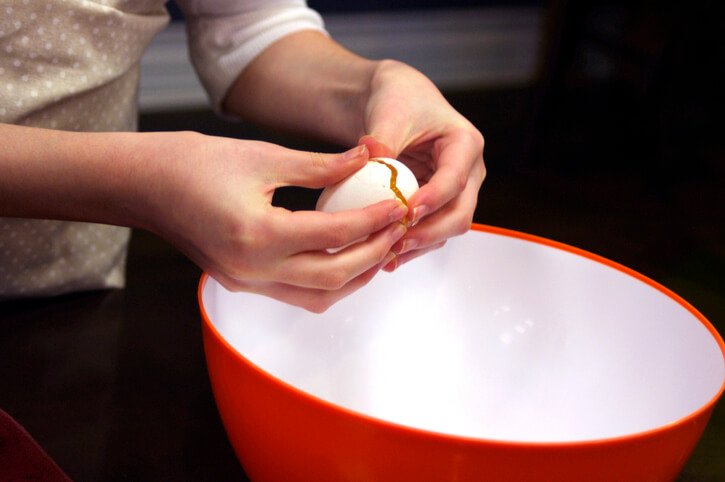
2
Cleaning Windows
Sunshine streaming through windows on a sunny day makes every streak and smudge stand out. But spritzing and wiping windows on a hot, sunny day can make the view even worse. That’s because searing sunshine can dry the cleaner before you even wipe it away, leaving “hard-to-remove streaks,” according to Good Housekeeping. Instead, clean windows on a cloudy day, or wait until the sun isn’t shining on that area of your home.
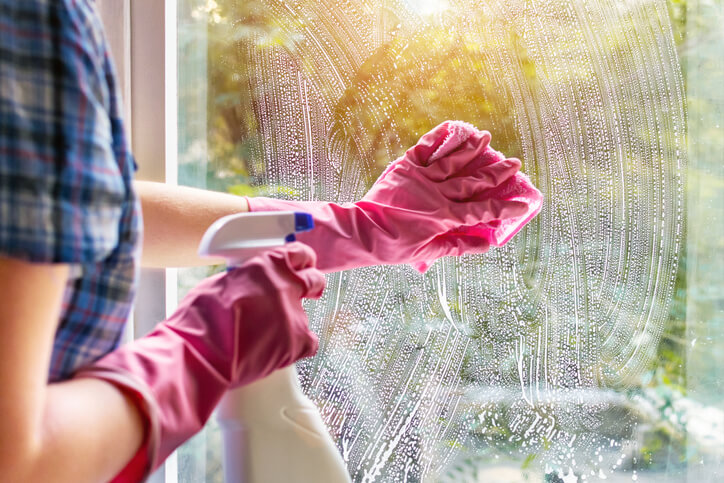
3
Sleeping
Sleeping on your stomach might make you feel more secure, but this position wreaks havoc on your neck and back. Sleeping on your stomach is hard on your spine because your back is arched and your head is turned, according to Harvard Medical School. The best sleeping positions for the neck are on your side or on your back. If you sleep on your side, keep your spine straight by sleeping with a pillow under your neck and head rather than mainly under your head. Whatever your sleep position, avoid high pillows and try sleeping on a “memory foam pillow” that conforms to the contour of your head and neck.
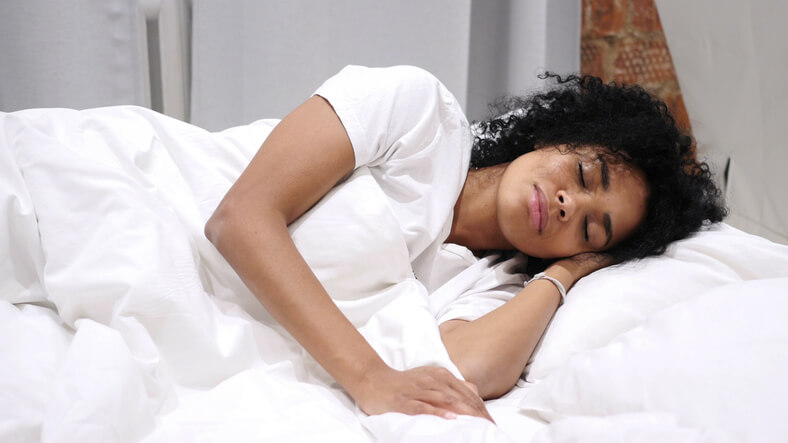
4
Peeling Bananas
If you’re like most people, you probably peel your bananas from the stem that attaches to the bunch. But guess what? That stem end is really the top of the banana, and for easier peeling and fewer strings, you should instead peel from the bottom. Just pinch the end to easily pull the peel apart.
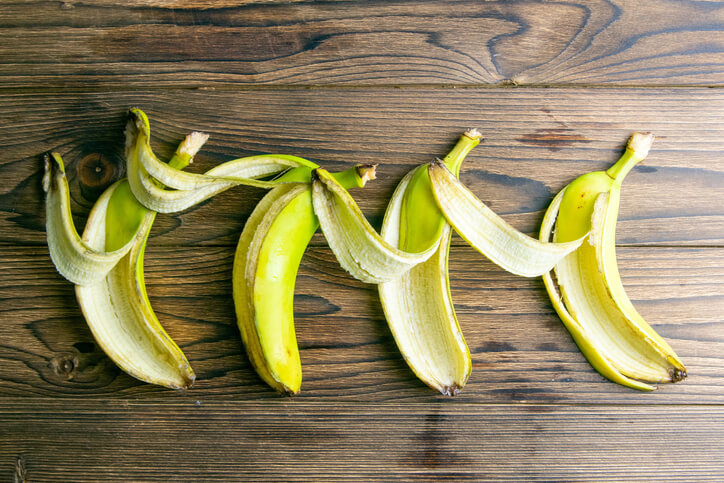
5
Storing Coffee
Many coffee lovers freeze coffee beans or ground coffee because they think freezing is the best way to store for ultimate freshness. However, the National Coffee Association of the U.S.A. (NCAUSA) warns that coffee stored for long periods in the freezer can suffer freezer burn and absorb odors and moisture if the container lets in oxygen. If you choose to freeze your coffee, the NCAUSA recommends using a “truly airtight container,” removing portions quickly and freezing coffee for no longer than a week at a time.

6
Slicing an Onion
The days of shedding tears over your poor onion-slicing and chopping skills could be over once you learn to slice an onion the right way. You can start by cutting only the top off and leaving the root (the end with brown, hair-like strings), which contains the highest concentration of tear-inducing sulphuric compound. Then follow these steps from Allrecipes after peeling the onion:
1. Cut the onion lengthwise from the root end to the top (leaving the root intact).
2. Lay one half flat on the cutting board.
3. Then make horizontal cuts, stopping slightly before you get to the root.
4. Next, make vertical cuts, stopping before the root.
5. Chop by cutting across the top of the onion.
Want to make sure you’re doing it right? Check your technique with this onion-slicing tutorial from chef Gordon Ramsay.
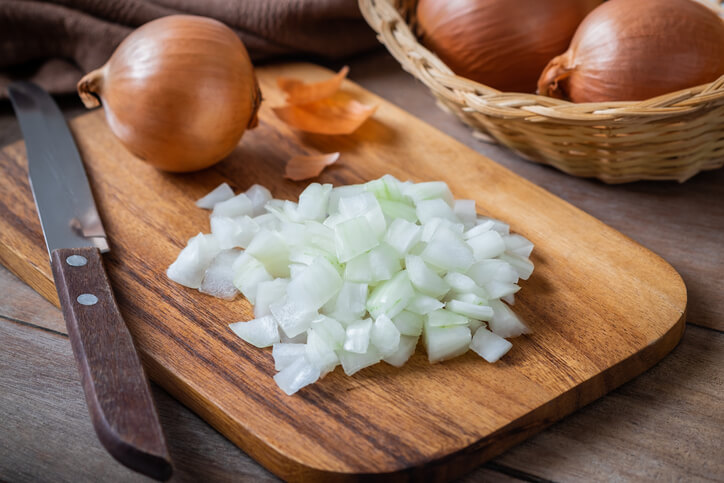
7
Holding Your Wine Glass
It may be easier to hold your wine glass at the bottom or sides of the bowl, but don’t be too quick to toast to good wine with this faulty grip. Hold a wine glass by the stem instead of the bowl to avoid warming the wine from the heat of your hand. Red wines are best served slightly above room temperature, and white wines when chilled, so holding the wine glass incorrectly can result in “flabby, lukewarm wine,” according to KnowWines wine blog.

8
Storing Tomatoes, Potatoes and Avocados
If you love tomatoes, the last thing you want to do is render them bland and mealy by sticking them in the refrigerator in hopes of keeping them fresh. The chilly temperature destroys tomatoes’ delicious flavor by breaking down acids, sugars and compounds that create their tantalizing aroma. Chilling avocados stops them from ripening to the right texture, so don’t place them in the fridge until they’ve ripened. Storing potatoes in the fridge changes potato starch to sugar, causing potatoes to change in flavor and brown excessively when cooking.
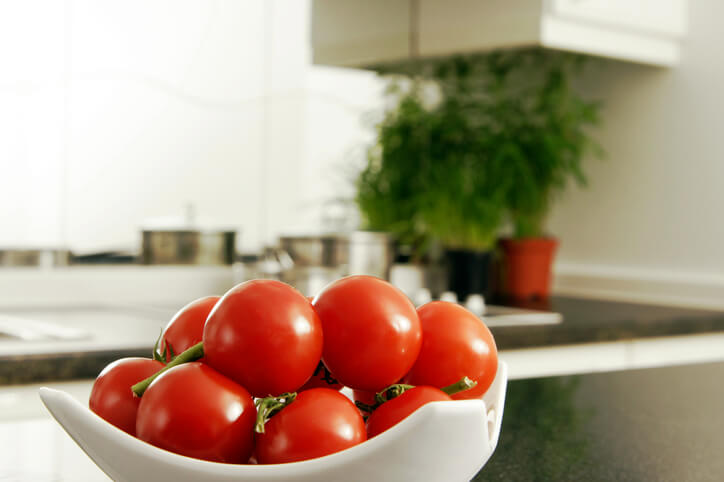
9
Letting Food Cool
If you’re leaving hot food out to cool for an hour or two before putting it in the refrigerator, you’re allowing bacteria to grow rapidly. Some are even “doubling in number in as little as 20 minutes,” according to the United States Department of Agriculture (USDA). Instead of waiting, place hot food directly into the refrigerator or rapidly cool it in an ice or cold-water bath, says the USDA.
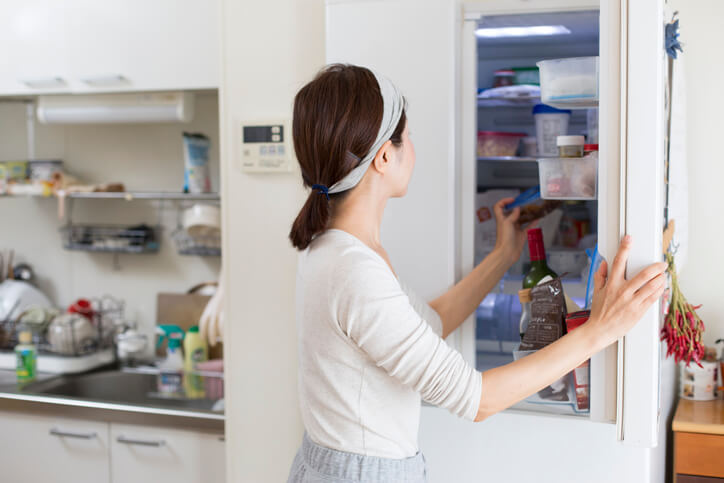
10
Washing Clothes
It may seem like pouring laundry detergent over your clothes once they’re loaded in the washing machine would give better coverage. Instead, the opposite is true. Pouring detergent on top at the wrong stage can prevent soap from dissolving fully, leaving streaks or powder on clothes. Add detergent to the washer tub first, then add laundry items.
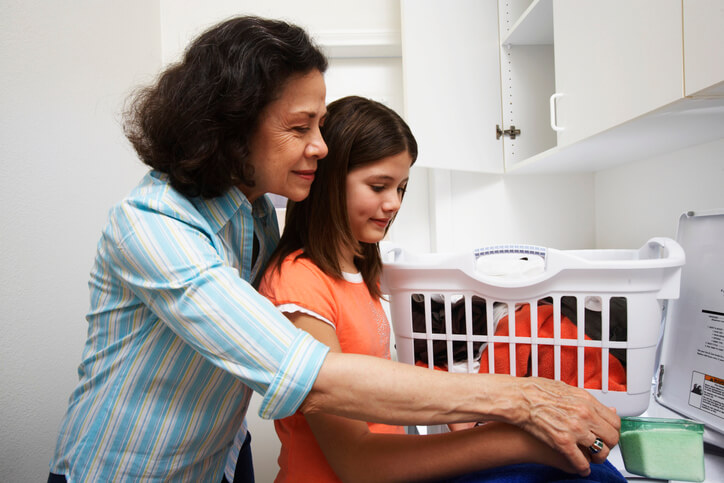
11
Storing Batteries
When you open a new pack of batteries, you may think you’re being organized by storing them in a different container. What you’re really doing, however, is exposing the batteries to power-draining humidity and risking a possible short-circuit if the batteries come into contact with each other or other metal objects.
Panasonic Batteries recommends keeping batteries in their original packaging. You should also store batteries in a cool, dry place but not inside the refrigerator, where humidity can cause condensation, corrosion and leakage.
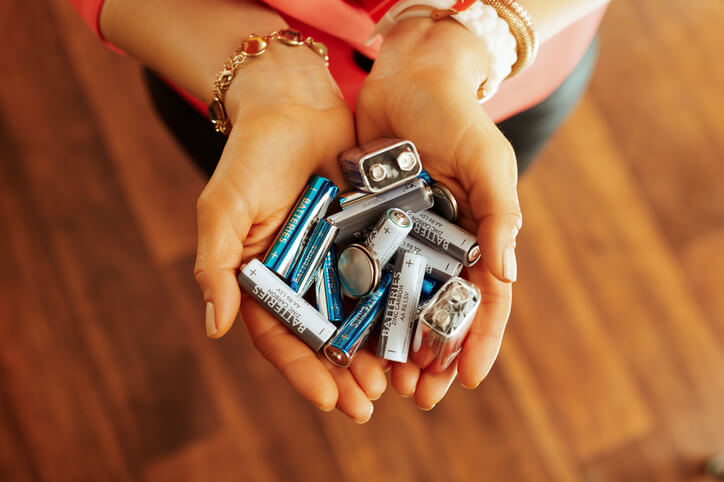
12
Recycling
If you make a point of recycling, good for you. But did you know that different municipalities have their own curbside recycling rules about which items will — or won’t — have a chance at new life in another form? For example, many types of plastic containers can usually be recycled, such as water bottles and laundry and dish soap containers. At the same time, some cities don’t accept plastic clamshell containers or butter or yogurt tubs for recycling.
To make sure you’re recycling properly, especially since many cities have updated their requirements in the last year, search for recycling guidelines on your official city or county website ending in the .gov extension. For more information on recyclable items, check out the Environmental Protection Agency’s FAQs.

Put Your New Skills To Use
Now that you’ve possibly learned a new way to do a few common things, maybe one day you can share the newfound knowledge with friends while clinking wine glasses, confidently clasped at the stem. Meanwhile, spend some time sharpening your onion-slicing skills in the kitchen to ready yourself for all those spring and summer recipes you’ll be preparing soon.
What else would you add to the list? Share with us in the comments.


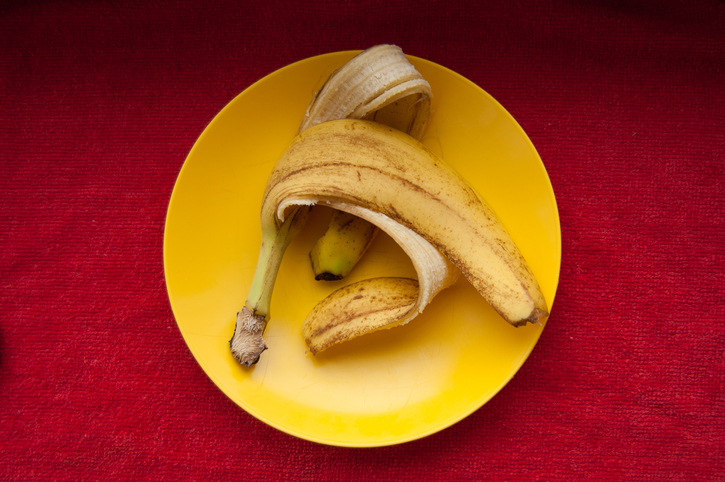

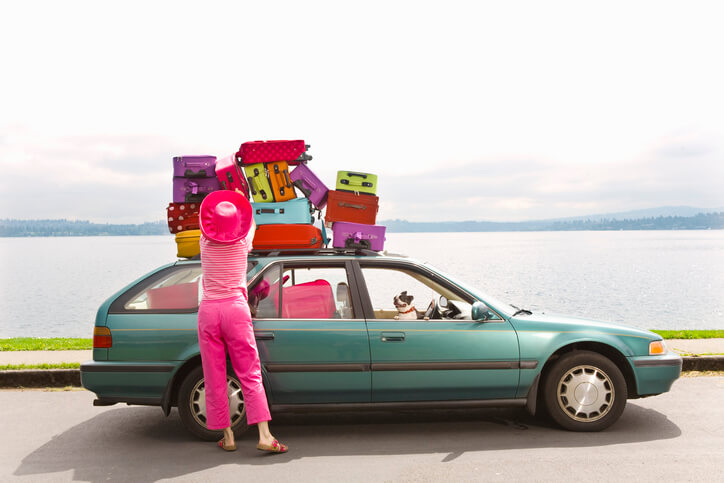


Enjoyed all the information and want to add, that if you do drop a piece off eggshell into your dish or pan, take a good size piece of eggshell and fish out the piece with it.
Per Rachael Ray and other chefs.
I did learn new things, thanks
I am 70+ years old and still appreciate help with my cooking skills.
Thank you so much for your tips, they are so helpful
Loved it
Thanks for reading!
I knew most of these tips except for the one about cutting onions. I will try it the very next time I have to dice an onion…and we eat a lot of onions! Thank you for posting this.
thanks for the tips, knew most of them but not about how to peel a banana and about not cooling food before putting in refrigerator.
Enjoyed this!
I love learning new things and how to do things better and more efficiently. Very interesting. I also watched Gordon Ramsey make scrambled eggs; now THAT was interesting. Thank you for sharing this. I enjoyed it.
One thing I will caution people on though, unless you are a professional chef, be VERY careful when learning how to cut an onion this way if you choose to do so…I just bought a very sharp large knife and believe me one slip in the wrong direction and I may regret ever seeing this. I believe I will cut how I feel the safest!
I found these suggestions valuable. When next you publish a similar list, I am interested in suggestions regarding the use of detergents for clothing [which we rarely get dirty compared to what happened in past years] and all the chemicals used. I am thinking of clothing, dishes, even floors and walls. Is just using water an advantage?
Good hints. I was told to watch a monkey peel a banana. I did and they always peel from the bottom.
Why do boxes of crackers and cereal not come with zip lock bags inside?
The vacuum sealed cheese with the zip lock is impossible (for me) to open, therefore a useless feature.
I learned some things I didn’t know. Keep sharing the hacks.
Great keep me on your email list for further game-changing ways
I, too, love learning. Some I knew and some i’m gonna try.
Slicing an onion and cleaning the windows were the most helpful hints for me. However, I often do the lazy thing for outside windows and just spray them with Fuller Brush spray using a garden hose. It does the job for me. No rinsing needed either. Of course that doesn’t handle the indoor ones, so this article still helps me with those. As far as chopping onions, I often buy the frozen pre-chopped ones to add to recipes where they’ll be cooked. Very easy. Thanks for these helpful hints. I also checked the gardening hacks and printed those for my use. Very good material.
I don’t know about #9. Putting hot food into the fridge can cause the food to acquire a “sour” taste.
I’ve never once gotten sick from letting food cool down from hot to room temp and then putting in the fridge. In fact I have left food out a lot longer than that and never gotten sick from it. The temperature of your home makes a big difference (the weather, summer or winter, very hot & humid vs. cool) I think too. This is overkill if you ask me.
I learned two things: how to peel a banana properly and not to freeze coffee…thanks!
Most of this stuff was in the kitchen things. I hate to cook. Period. So I need other ideas for less time in there. And other ideas for quick gardening, cleaning, or getting others to help out!
Patty – Check out our gardening section. Happy Spring!
Great ideas. Can put them to use right now… Thanks
Thanks again for contacting me.
As an accomplished writer and instructor to students who are attempting to be one as well, I would encourage you to drop the word THING in your title and replace it with a better adverb, say, ACTIONS. The word THING has little meaning to it, describing both nouns and adverbs. Thanks.
Thank you. Good information & I learned a few things!
During the last 4 years as my wife’s caregiver for Alzheimer’s I became a good cook, laundry man, duster, and baker. Wow was I wrong, Some really good advise in this article and the wine glass thing is one that I didn’t partake in as I didn’t have time. I still have to cook etc. and I will be putting this stuff to good use but I still can’t fold a fitted sheet. Thank You
Jack – We think fitted sheets are tough too!
Hi Jack – Here’s how I fold my fitted sheets:
Lay a freshly washed fitted sheet on your bed lengthwise. Put your hand into one of the four rounded corners, then bring that corner with your hand inside it to the other corner at that end of the sheet. (Both short ends are now together.) Do the same at the other end of the sheet. With your hand inside both corners at one short end, bring that end to the other short end corners so now all 4 short end corners are on your hand & the sheet is now an odd-shaped square. Lay that flat on the bed & fold in the side of the sheet that has the rounded corners to make the sheet more square. Now fold to fit however you fold your sheets for storage.
Hope this helps! Thank you for being a caregiver!
This email is addressed to Isidor Appell, my deceased husband.
Joanne – We are so very sorry for your loss. We’ve alerted our email team to see if they can fix this for the Extra Mile newsletter. If you are a customer of ours, you may also want to reach out to customer service in case his name is still on your policy if you haven’t already. You can call them at 800-423-6789
M-F: 8 a.m. to 9 p.m. ET and Sat: 8 a.m. to 6 p.m. ET.
Love knowing how to do things better.
Thank you!!
Only 3 I’d not heard of before & 2 I can’t do because of physical limitations of gripping or pinching with my right hand due to previous wrist surgery.
Speaking of eggs, I know how to peel boiled egg shells with very little, if any, small pieces of shell to pick off. Bring water to boil with eggs in pan at med-high heat, then turn off heat & leave eggs in hot water for 6-7 minutes. Remove eggs to saucer & put saucer in refrigerator until cool enough to handle. Hit pointed end of egg on counter, then rounded end. Place egg on side on counter & rock back/forth, turn 1/3 & repeat, turn 1/3 & repeat. Use fingernail to remove cracked shell from pointed end. Sometimes it will come off in a spiral, like peeling an apple – membrane & all. If only half of shell spirals off, hold end of egg that has been peeled in other hand & gently pull off rest of shell & membrane from other end of egg.
I have those kind of windows that tilt in & I’ve found that washing windows is a good thing to do on those dreary, rainy days (not those with thunder storms, but a more gentle rainfall) when you don’t feel like doing much, but want to accomplish something. Those are the days I’ll wash windows in a couple of rooms, throw in a load of clothes, sort through a junk drawer or a bookcase, sweep, then steam the floor in a room or 2, or do some ironing or sewing – just so I feel I did something instead of just vegging.
As for laundry detergent, I don’t use powdered soap, only liquid & I have a front loader which has a drawer with separate compartments for detergent, softener & bleach. When I was growing up the family had a top loading agitator & I always got the water running, added the detergent, swished the agitator a couple times, then added the clothes so no soap residue was left on the clothes. Yuk!
I saw the hint about how to peel bananas when I was watching a PBS Nature show about how smart animals are & they showed how monkeys peeled & ate bananas.
Think you’ll get some push back from energy people about putting hot food directly into the fridge. That uses more energy, plus you can’t use plastic containers or wrap until food has cooled off sufficiently. Most things I bake say to take out of the oven & let sit for 5 to 15 minutes before serving. If what I baked is for more than 1 meal, I know I’ll dish up my meal & sit down to eat it before I’ll cover the remaining food & put it in the fridge, so it’ll sit out for at least a total of 20 to 30 minutes.
Watching all the cooking shows on PBS has taught me how to dice onions properly, but I don’t always want them diced. Sometimes I want them in rings or in slivers. I also learned not to refrigerate tomatoes from those shows. I already knew from my German grandmother to keep potatoes in a cool, dark place, so have a fabric bag with a dark lining that I keep them in on a cool, dark corner of my kitchen counter & a separate, similar bag for onions. If I buy an avocado that is still too firm, I know to keep it at room temperature in a paper bag until it gets softer.
And, oh boy, recycling is a totally different world in every different city, town or rural area I’ve lived in. Currently, because my actual residence is physically located in one county, but due to federal postal regulations my mail has to be delivered by the nearest PO which is one county North of where I live, but the man who picks up my trash & recycle takes it to a dump in another county, I’m always confused about this. Plus, it depends on how the recycling business has structured their work process. Some put all of it on an assembly line & have sorters hand pick & discard items they don’t recycle into stacks to either send to other recycling plants, put in with garbage, or salvage in some other way. It’s maddening!
Thanks for the tip about peeling hard-boiled eggs!
Great tips and ideas. I especially liked the chopping onions tutorial. It’s always good to learn new things.
A friend came over to our house with a soft brush, some DAWN, a squeegee, and lint free rag. We supplied the warm water. To our amazement he cleaned some windows that we could not get cleaned and did it with far less effort. An ounce of dawn in a gallon on water and soft touch with the brush over the entire window. Then right to the squeegee followed by a soft rag around edges and the window was spotless. No rinsing with clear water. No need. While any detergent removes dirt, something about dawn cuts all grease & leaves it streak free & spotless.
Thank you for the tips, doing a few things differently, you can teach an old dog new tips
Red wines should be served slightly BELOW room temperature—say 65 degrees—not above room temperature as you suggest.
depends on the room temp, Bill ;-). but I’d say anywhere from 59 to 67 degrees…so you are right in the ballpark! lots of variables.
This was great material and some was new to me at 77 years of age, thank you!
very cool….I have “heard” about slicing an onion that way,
but seeing Gordon’s method made it come to life and look so easy.
thanks.
questions on Coffee Storage:
Does that info about freezing include
K-cups? And what about in the refrigerator part?
How long will k-cups last on the counter or in the refrigerator or in the freezer
About cracking the egg. There is one exception and that is when you plan to separate the egg. Then you need to crack it against the side of a bowl or pan with a rather sharp edge to get a clean break. It then opens and you don’t have a lot of sharp pieces that could break the yolk causing the yolk and white to merge rendering it unusable for that purpose.
Great job and info. Always like to learn the easier and better ways to do things.
Watch monkeys. That is exactly how they open bananas, from the bottom. Who says humans are superior?? 😉
Thanks for the info about store hot foods.
1. I learned by trial and error not to store tomatoes, etc. in the fridge because afterwards they just taste awful.
2. When I stored batteries outside their container, I came home to smoke and a melted plastic box I had kept them in.
3. Good to know not to clean windows on a hot day.
Thanks for all your tips!
I knew all but 4, so will start doing those 4, like the egg, banana, letting food cool and laundry. Thanks for all the information, very helpful.
I’ve learned how to peel bananas so I don’t get all those strings
I’ve learned not to let hot food sit out until it cools
I’ve learned the best way to crack an egg
I’ve learned the best way to cut/chop onions
I’ve learned the proper way to store tomatoes, avocados and potatoes
Thanx!
Never too old to learn…I’m 89 and got a few good tips.. some I’ve been doing. Thank you
I managed to get eleven right! Didn’t know to cut an onion lengthwise! Will definitely do that from now on!😊
Thank you.
Thanks! I’m 72 years old and, finally, I don’t dread cracking an egg.
I loved this video. Especially about the onion cutting. Tonight I’m doing it this way. You learn something new every day.
If we wait to wash windows until “.. the sun is shining on a shady side” of the house we will have very dirty windows. Permanently.
Yes! We’ve updated this now. Thanks for the good catch.
The comments are very helpful.
Thank you for your service in sharing those tips.
What a good review…I’m always looking for good ideas to save money on my fixed income, and some of these ideas will be very helpful. Thank you.
Senior Citizens may have lived for years not knowing these correct hacks. Thanks for teaching a old dog new tricks!!
Great tips. I especially love the oinon tip. I’ve always fumbled trying to figure out how to cut them. I recommend viewing the video.
I was doing tomatoes and bananas wrong. Thanks for the tips
Thanks for the info. I try to learn something new every day. Very helpful tips.
If storing batteries in the original container is the best method to preserve the unused battery then why to the manufacturers put their batteries in those impossible to open, vacuum sealed plastic packages. Why not put them in easy to open containers like the dry wall screws are stored in and can easily open and close.
You should point out that only about 9% of plastic is actually recycled. We are kidding ourselves that we are doing good by separating all the plastic – it is far better to reduce the use of plastic or re-use items when possible. Recycling plastic is a myth put forward by the plastic manufacturers to make us THINK that plastic is not bad for the planet.
Removing Pomegranate seeds from fruit
Remove under running water over a colander. This allows for the seeds to separate and dilutes the red juice from spraying
Thanks for the advice. Love learning new things. I do all but 4, so “not too bad” yay me lol
Great suggestions and well explained why. Some I already knew but the onion slicing was the bes.
I always welcome learning new and better ways of doing things. Thanks for this article.
Why not be positive instead of “things you do wrong”!! we already have enough negativity! Say Here are 10 things you are probably doing right:)) At my age I have apparently done thousands of things right or I wouldn’t still be here -just saying. Look on the bright side. Of course luck and genes also helped get me here.
Peggy – Thanks for the great feedback. We’ve made some updates to this article. For more positivity, check out our most recent 30-Day Challenge: Random Acts of Kindness. Thanks for reading!
Yes!
Excellent point Peggy – I know I’ve done thousands of many things right or learned what not to do along the way, and some things I have not done at all, or am not doing some things in life that I have done before or will do again. Bottom line – these things are not worry worthy. I do crack eggs the easy way and I know how to care for an avocado. But I’ve not been sleeping correctly for decades. Will a do-over buy me 50 extra years?
I am doing five things right but I thought I would have a higher score! Will work on those bananas.
I had seven out of Twelve Right !! It could have been Worse ??
How one peels bananas won’t impact anything. Clothes washers come with detergent dispenser s, when was the last time you needed to add the soap yourself? Many of these hacks have very narrow focus.
Good info, been doing some of these wrong. will change my ways.